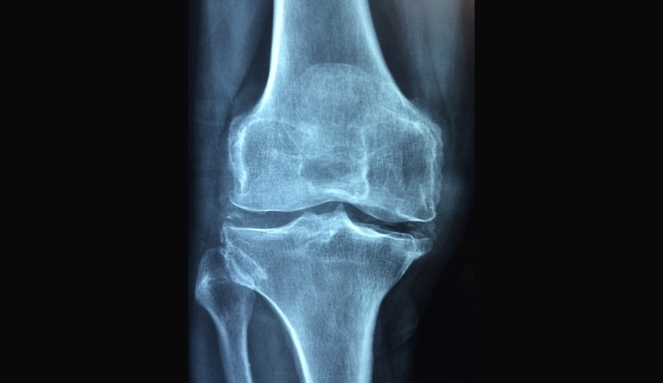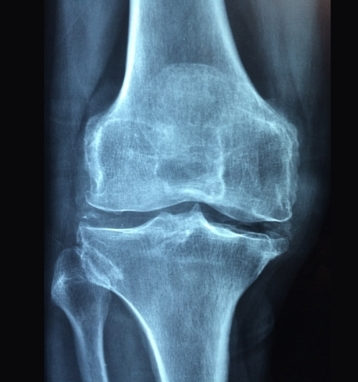Joint Health

What is joint discomfort?
Joint discomfort refers to pain, soreness and stiffness in any of the body’s joints. Sometimes, joint pain is the result of an intense physical activity, such as the long-term mechanical stresses during exercise. It can also be caused by injuries, such as sprains, fractures and dislocation. Others experience joint discomfort as a result of arthritis.
Joint pain from Arthritis
Arthritis is a long-term condition which can have a substantial impact on the quality of your life. It is an umbrella term that describes a range of conditions affecting joints—most commonly a osteoarthritis and rheumatoid arthritis (1, 2). Joint pain due to arthritis results from a breakdown of the cartilage that serves as a cushion and shock absorber for the joints, whereas in rheumatoid arthritis body’s immune system attacks the membrane that lines the joints causes pain, inflammation, and fluid build-up in the joints.
What is joint discomfort?
Joint discomfort refers to pain, soreness and stiffness in any of the body’s joints. Sometimes, joint pain is the result of an intense physical activity, such as the long-term mechanical stresses during exercise. It can also be caused by injuries, such as sprains, fractures and dislocation. Others experience joint discomfort as a result of arthritis.
Joint pain from Arthritis
Arthritis is a long-term condition which can have a substantial impact on the quality of your life. It is an umbrella term that describes a range of conditions affecting joints—most commonly a osteoarthritis and rheumatoid arthritis (1, 2). Joint pain due to arthritis results from a breakdown of the cartilage that serves as a cushion and shock absorber for the joints, whereas in rheumatoid arthritis body’s immune system attacks the membrane that lines the joints causes pain, inflammation, and fluid build-up in the joints.


Osteoarthritis is one of the most common forms of arthritis among the 150 musculoskeletal syndromes and conditions known and is associated with increasing age, female gender, trauma or overuse of the joint, genetics and obesity.
Osteoarthritis can occur in any joint but is most commonly in the knee. Other impacted joints include the hip and joints of the hand, foot and spine. It occurs from loss of articular cartilage within synovial joints, which is associated with the development of osteophytes and thickening of the joint capsule. Clinically, the condition presents as joint pain, tenderness, limitation of movement and variable degrees of local inflammation (3, 4, 5, 6, 7, 8).
In comparison, rheumatoid arthritis is an autoimmune disease that causes chronic inflammation of the tissue around the joint that could ultimately destroy the bones in the joints. Prostaglandins causes inflammatory responses and can cause the joint damage in rheumatoid arthritis when there is an imbalance of free radical production and antioxidants (9).

How to alleviate joint pain
There are a range of ways to treat joint pain that include:
- Regulating the exercise intensity or duration
- Taking non-steroidal anti-inflammatory drugs such as Ibuprofen and Naproxen
- Using steroids such as Prednisone or Cortisone
- Undergoing surgical interventions such as cartilage transplant or joint replacement surgery
While the main goal of these treatments are to alleviate the symptoms and enhance your joint’s capabilities, there are often significant risk, side effects and expenses involved. For many years pharmalogical therapies that include analgesics (e.g. paracetamol, oxycodone, propoxyphene, etc.) and/or non-steroidal anti-inflammatory drugs (NSAIDs) (e.g. ibuprofen, diclofenac, celecoxib), either alone or in combination have been used (10, 11, 12, 13).
While the short-term effectiveness has been proven, these treatments are frequently associated with adverse health concerns such as cardiac risks and gastrointestinal problems as well as lacking the promotion of joint tissue repair. The absence of this is what has inspired us to find a truly remarkable solution to support the joint health (14, 15, 16).
How to alleviate joint pain
There are a range of ways to treat joint pain that include:
- Regulating the exercise intensity or duration
- Taking non-steroidal anti-inflammatory drugs such as Ibuprofen and Naproxen
- Using steroids such as Prednisone or Cortisone
- Undergoing surgical interventions such as cartilage transplant or joint replacement surgery
While the main goal of these treatments are to alleviate the symptoms and enhance your joint’s capabilities, there are often significant risk, side effects and expenses involved. For many years pharmalogical therapies that include analgesics (e.g. paracetamol, oxycodone, propoxyphene, etc.) and/or non-steroidal anti-inflammatory drugs (NSAIDs) (e.g. ibuprofen, diclofenac, celecoxib), either alone or in combination have been used (10, 11, 12, 13).
While the short-term effectiveness has been proven, these treatments are frequently associated with adverse health concerns such as cardiac risks and gastrointestinal problems as well as lacking the promotion of joint tissue repair. The absence of this is what has inspired us to find a truly remarkable solution to support the joint health (14, 15, 16).
